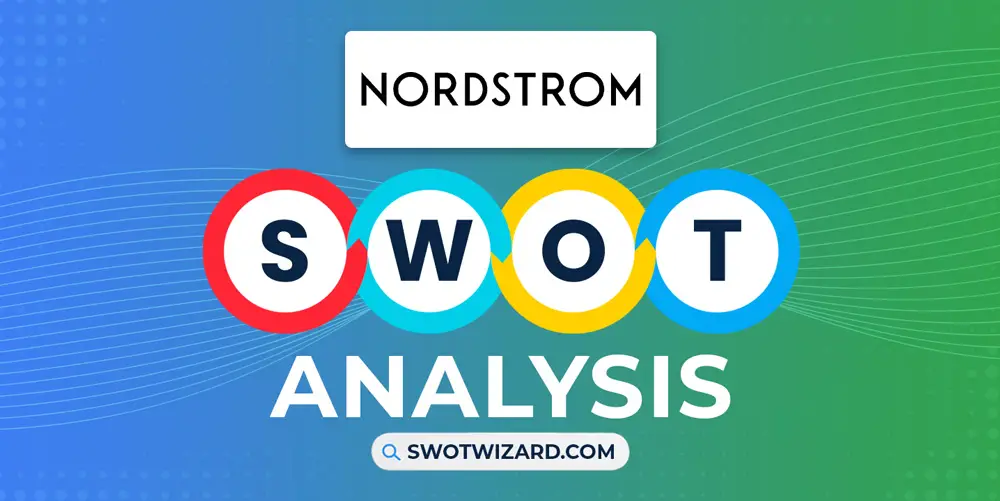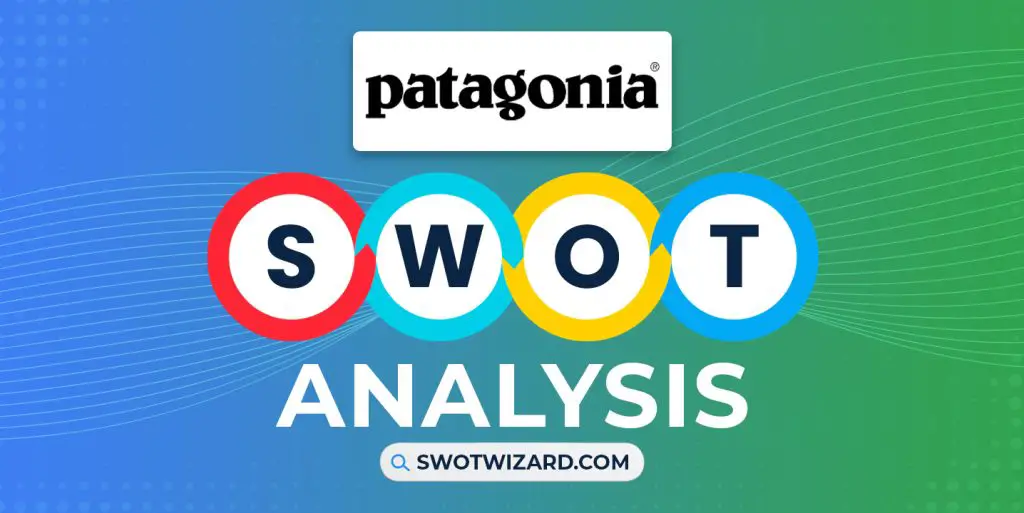Nordstrom has a long history, and their customer service philosophy is still intact as it was over a hundred years ago when it was founded. It was one of their greatest strengths that helped the company to come this far, along with other strengths, weaknesses, opportunities, and threats, which we will learn in this Nordstrom swot analysis.
Nordstrom: Company Overview
| Company | Nordstrom, Inc. |
| Industry | Retail |
| Founded | 1901 |
| Founders | John W. Nordstrom, Carl F. Wallin |
| CEO | Erik Nordstrom |
| Headquarter | Washington, U.S. |
| No. of Employees | 62,000+ |
| Annual Revenue | $14.789 billion (FY 2022) |
| Website | nordstrom.com |
Around 122 years ago, Nordstrom was founded by John W. Nordstrom and Carl F. Wallin in 1901 as a small shoe store in Seattle, Washington. It has remained a family-owned company for over a century, with subsequent generations of the Nordstrom family involved in its operations.
Fast forward to the present day, Nordstrom has blossomed into a retail powerhouse. With over a century of growth and innovation, it has become a destination for fashion-conscious individuals seeking a premium shopping experience. Nordstrom’s total revenue stands tall, reaching $15.1B, with a dedicated workforce of approximately 60,000 employees in 2022.
Product & Services of Nordstrom
Clothing | Footwear | Handbags | Jewelry | Accessories | Cosmetics | Fragrances | Home Furnishings | Housewares | Appliances | Bedding | Bath | Gifts | Wedding
Nordstrom Competitors
Macy’s | GAP | Dillard’s | Kohl’s | Target | Bloomingdale’s | Saks Fifth Avenue | T.J. Maxx | JCPenney | Belk
Did You Know?
Nordstrom was one of the first major retailers to offer electronic gift cards in 1994, allowing customers to purchase without physical certificates.
Strengths – Nordstrom SWOT Analysis
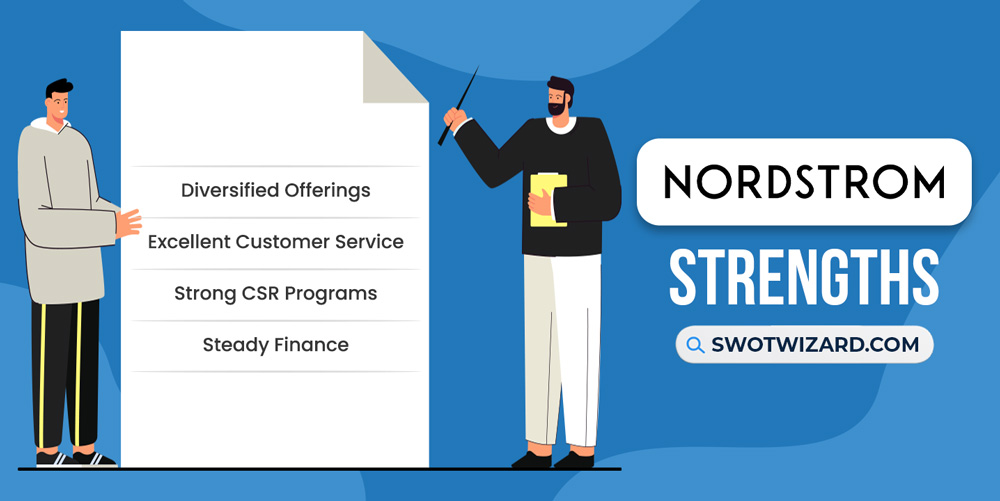
Diversified Offerings: Over the years, the company has built an extensive product range across multiple categories, including apparel, accessories, beauty products, and home goods, offering high-end designer brands and more affordable private label options. The diversification allows Nordstrom to cater to a broad customer base.
Excellent Customer Service: The company is known for its exceptional customer service, which has become a cornerstone of its brand. The company empowers its employees to go above and beyond in assisting customers, creating a personalized and memorable shopping experience. As a result, the company has a more competitive rating on the customer rating than the competitors.
Strong CSR Programs: The company focuses on sustainability, diversity and inclusion, and community engagement. It has set ambitious sustainability goals, such as reducing greenhouse gas emissions and promoting ethical sourcing practices. Nordstrom’s commitment to social and environmental responsibility is evident through its CSR initiatives.
Steady Finance: The company consistently generates steady and positive revenue and has a healthy balance sheet, which helps the company to move forward. Nordstrom reported total revenues of $15.1B and a net income of $178M in 2022, showcasing its ability to generate substantial sales volume and maintain financial strength amidst market challenges.
Weaknesses – Nordstrom SWOT Analysis
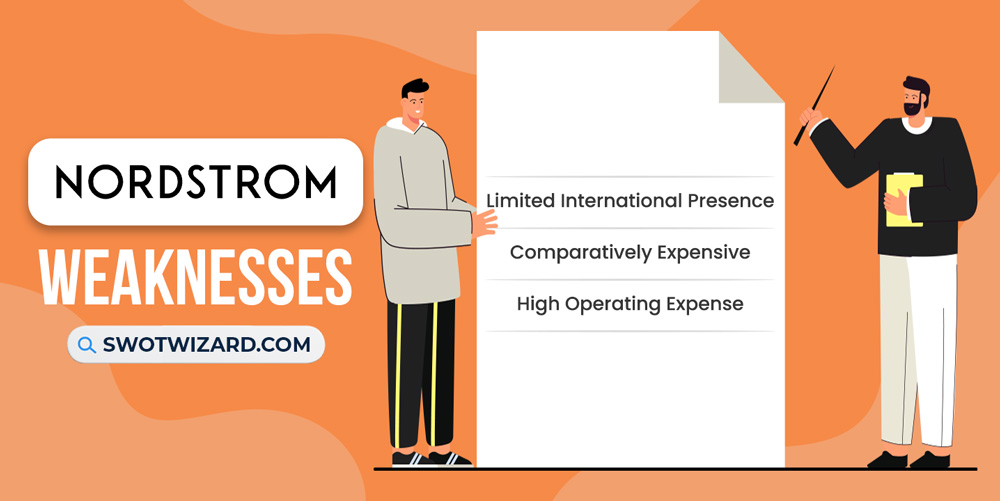
Limited International Presence: The company’s international footprint remains relatively small compared to its competitors, such as Macy’s, the biggest competitor, which has 783 global stores, compared to Nordstrom’s 368 stores. Besides, its international presence is limited to just a few locations, restricting its exposure to global markets and limiting potential revenue growth.
Comparatively Expensive: When it comes to Nordstrom’s pricing, it is often positioned at the higher end of the market, making it less accessible to price-sensitive customers. As a result, its luxury brand offerings and designer collections come with premium price tags, limiting its appeal to a broader customer base.
High Operating Expense: Nordstrom’s operations entail significant costs, including store leases, employee salaries, and inventory management, and it has been rising for the last few years. Besides, maintaining its extensive network of physical stores requires substantial financial resources. These high operating expenses pressure the company’s profitability and may impede its ability to invest in strategic initiatives.
Opportunities – Nordstrom SWOT Analysis

Expand Globally: The company has the opportunity to tap into international markets to diversify its revenue streams, such as entering emerging markets like China and India can leverage their growing middle-class population. The data shows that the luxury goods market grew by 35% globally, showcasing Nordstrom’s potential to capture a market share.
Effective Pricing Strategy: As most of their products can be seen as expensive and high-end, Nordstrom can implement a pricing strategy that balances premium products and affordability. By offering a range of price points, Nordstrom can attract a wider customer base.
Stronger E-Commerce: With global e-commerce sales projected to reach $7.5T by 2025, Nordstrom has the opportunity to invest in technology and user experience to provide seamless online shopping, personalized recommendations, and convenient delivery options, driving customer engagement and sales.
Strategic Acquisitions: By leveraging synergies and innovative capabilities, Nordstrom can drive growth and stay ahead in the rapidly evolving retail landscape. The company can consider strategic acquisitions to expand its market presence, such as acquiring a digitally native brand or a technology company specializing in data analytics can strengthen Nordstrom’s competitive advantage.
Threats – Nordstrom SWOT Analysis
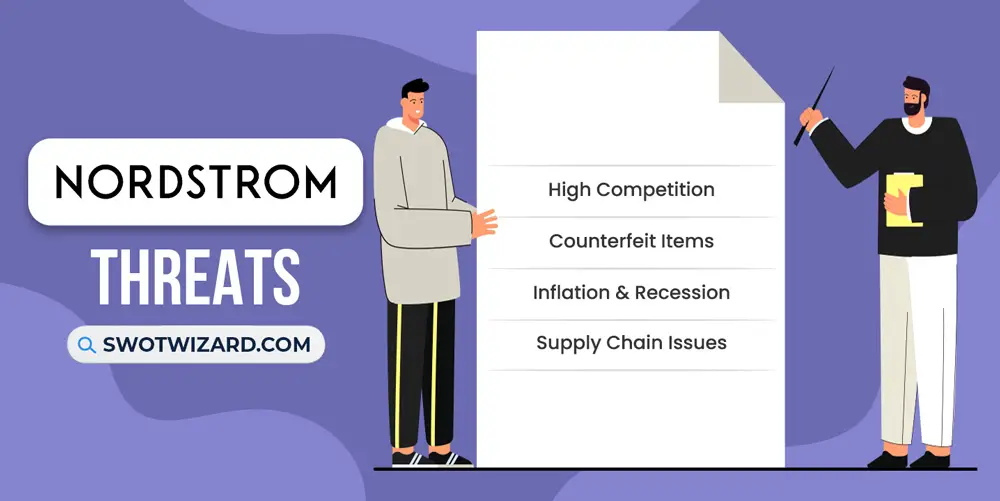
High Competition: E-commerce giants like Amazon and fashion-focused online retailers like ASOS pose a threat by offering convenience and competitive pricing. Not to mention the other competitors like Macy’s and Bloomingdale’s offer similar product ranges and target a similar customer base, putting pressure on Nordstrom to differentiate itself and continually innovate to attract and retain customers.
Counterfeit Items: The presence of counterfeit items in the market is a significant threat to Nordstrom. Counterfeit products not only undermine the brand’s reputation for quality but also result in lost sales and potential legal issues. In recent years, there have been several instances where counterfeit luxury goods have been found in the marketplace, affecting both consumers and legitimate retailers like Nordstrom.
Inflation & Recession: During the 2008 financial crisis, Nordstrom experienced a decline in sales as consumer confidence and spending declined. Inflation and economic recessions can impact Nordstrom’s business. During periods of inflation, rising prices can squeeze consumers’ purchasing power, making high-end products less affordable. In economic downturns and recessions, consumers may cut back on discretionary spending, affecting Nordstrom’s sales.
Supply Chain Issues: We all faced and noticed the horror of COVID-19 in our life, not just personally, but the entire supply chain almost collapsed during those times, and the impact of that is still here. As Nordstrom relies on a complex global supply chain, any disruptions in the supply chain can lead to inventory shortages and create a mess out of it.
[Bonus Infographic] SWOT Analysis of Nordstrom
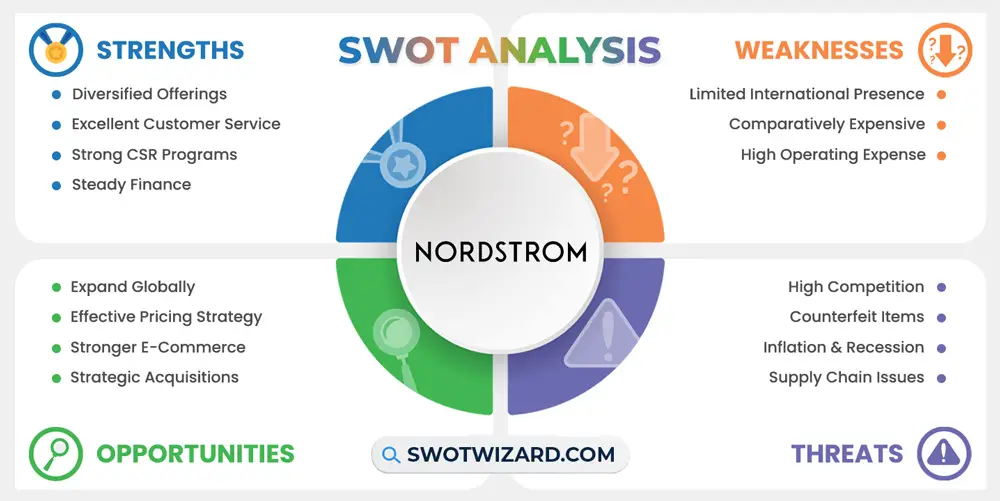
Recommendations for Nordstrom
Despite all the experience and history, Nordstrom struggles to capture more market share, and giant competitors are rising from every corner. To stay ahead, they need to gain competitive advantages.
- Nordstrom should explore opportunities to expand its presence in international markets.
- Invest in enhancing the user experience of the online platform, focusing on intuitive navigation, personalized recommendations, and seamless checkout processes.
- Implement a tiered pricing strategy to cater to a wider customer base, offering high-end luxury products and more affordable options.
- The company should strengthen its supply chain by diversifying suppliers, improving visibility, and developing contingency plans.
- Strengthen efforts to combat counterfeit items by partnering with reputable authentication services.
Frequently Asked Questions (FAQs)
Who Are the Owners of Nordstrom?
Bruce Nordstrom and Anne Gittinger are the largest owners of Nordstrom.
How Many Countries Does Nordstrom Operate In?
Nordstrom operates in 98 countries.
Final Words on Nordstrom SWOT Analysis
Nordstrom has a strong brand reputation, a diverse product range, and a customer-centric approach. However, it faces challenges from intense competition, counterfeit items, economic fluctuations, and supply chain issues. By implementing pricing adjustments, enhancing e-commerce capabilities, addressing counterfeits, and expanding internationally, Nordstrom can position itself for continued success in the dynamic retail landscape.
References
- Wikipedia contributors. (n.d.). Nordstrom. Wikipedia.
- Acquisitions by Nordstrom. (2023, May 8). Tracxn.
- Taylor, G. (2023, March 30). Nordstrom Supply Chain Chief Talks Automation, AI. Sourcing Journal.

